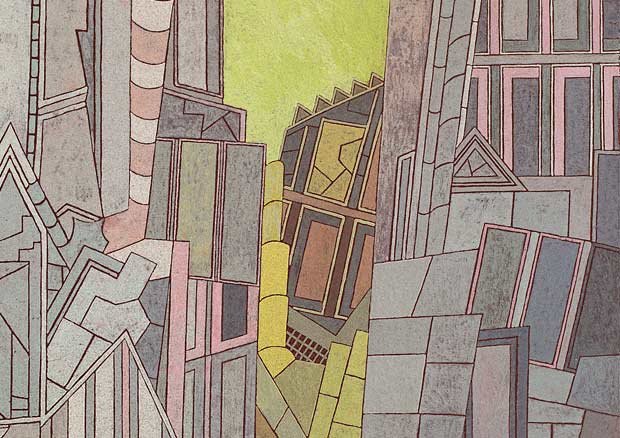Language and Image
«Zur Unzeit gegeigt...» Otto Nebel, Painter and Poet
On the occasion of Otto Nebel’s (1892-1973) 120th birthday, the exhibition will be showing for the first time the entire oeuvre of this artist and author who lived in Bern for many decades.
The focal point of the show is how visual representation in painting, drawing, the print medium, as well as collage interacts and interrelates with literary texts, that is, the exhibition explores the relationship between text and image. Nebel's key paintings and poetical works will be presented according to thematic subdivisions and different stations of his life.
In the case of Otto Nebel it is not only highly relevant to speak of dual talents. Like many of the avant-garde of the early 20th century, Nebel experimented with language and the the visual arts. His overriding goal was “to produce models of harmony from symbolic and allegorical elements.” The exhibition elucidates how the lyrical is irrevocably bound to his painting and lucidly illustrates that it is time to rediscover Nebel as an artist working on an intermedia basis.
Nebel was conspicuous as a word artist as member of the “Sturm” movement connected to Herwarth Walden. For its publication he produced not only texts but also the initial linocuts. In the 1920s Nebel created his Runenfugen (Runic Fugues) – poems that comprised a limited number of letters. The degree of abstraction he achieved therein only later became manifest in his art as well. Nebel was an artist who paid extreme attention to detail and was technically very thorough. He often resorted to a laborious process in order to “construct” his paintings and colored sheets by applying layer after layer on a support that he had previously primed several times. Sojourns in Italy were decisive for his work. There he produced a color atlas that was to influence much of his art. Analogous to the characters in the Runenfugen, color and light form an independent visual domain in the partly figurative landscapes and cityscapes. In the mid-1930s, Nebel increasingly turned away from figurative art and explored the use of a symbolical visual language that he called Runenbilder. However, he did not really consider this form of visual language as “non-figurative”, as he said so himself: “In my art you find only things … pure events from innermost life.”
In 1969, Nebel donated around 200 works of art to the Kunstmuseum Bern, and after he died his estate was incorporated into the Otto Nebel Foundation, which is situated in Bern. The artist’s literary work is now kept in the Swiss Literary Archives. Most of the exhibits in the show have been selected and augmented by works from gallery and private collections, including also cross-references to artists who were important for Nebel on a personal and artistic level. A richly illustrated accompanying publication is intended to be a reference book on Otto Nebel's poetic and artistic work.






